A hollow uncharged spherical conductor has inner radius A and outer radius b. A positive point charge +q is in the cavity at the center of the sphere (Fig. 3.48). Find the potential V( r) everywhere, assuming that V=0 at r→∞.
 .
.
The conductor is an equipotential volume, so V is constant for a≤r≤b. The field lines inside the cavity must end on the inner surface of the cavity, so this surface has an induced charge −q. Since the shell is uncharged a positive charge +q is on the outer surface (Fig . 3.49).
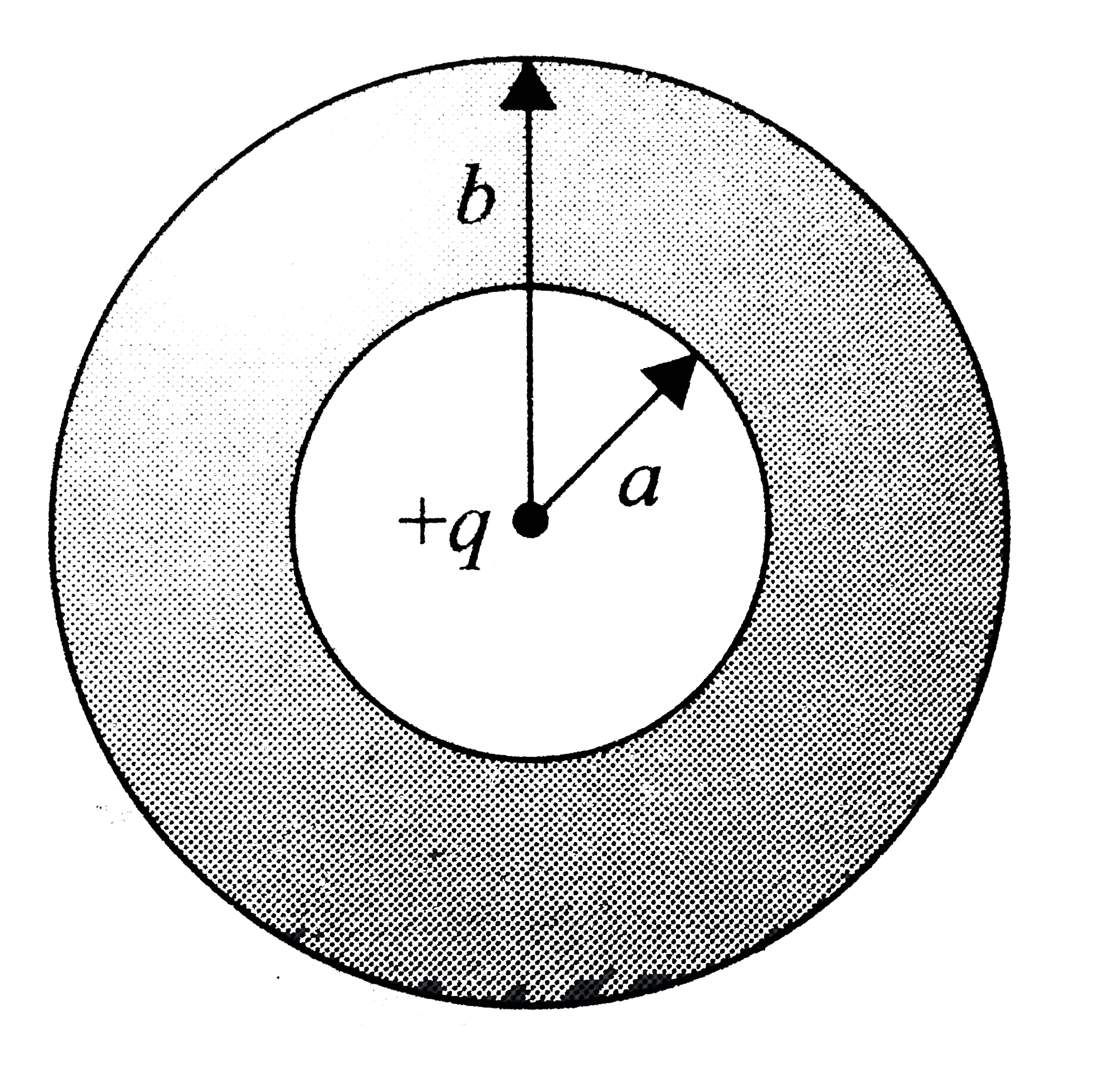 .
.
The three charges q at the center, −q on the inner surface, and +q on the outer surface produce a field
Er=14πε0qr2
for r>b, so the potential for r>b is
V=14πε0qr
Outside the shell, V(r) is the same as that due to a point charge q at the origin. Choosing V=0 at r=∞, we have
V(r)=14πε0qr,r≥b
At r = b, the potential is q/4πε0b,Vremains at this constant value throughtout the spherical shell from r=b to r=a, so
V(r)=14πε0qb,a≤r≤b
For any point inside the cavity (r<a)
V ( r) = Electric potential due to q at center + Electric potential due charge distributed on spherical surface of radius a + Electric potential due to charge distributed on spherical surface of radius B. So
V(r)=Vq+Va,inside+Vb,outside
=14πε0qr+14πε0(−q)a+14πε0qb
=14πε0qr+14πε0qb−14πε0qa,r≤a
(Figure 3.50) shows the electric potential as a function of distance from the center of the cavity.
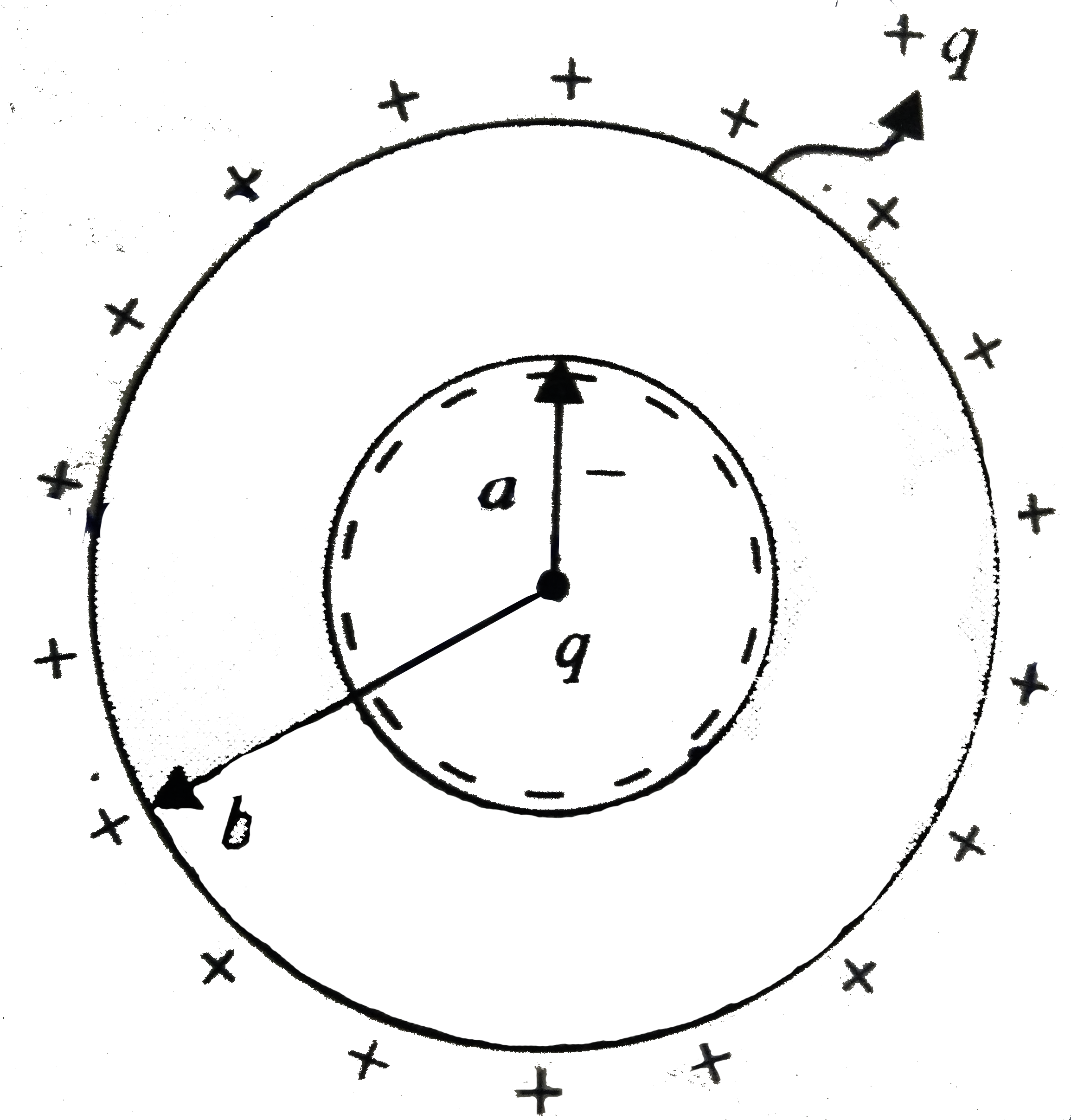 ,
,
Topper's Solved these Questions
- BOOK - CENGAGE PHYSICSCHAPTER - ELECTRIC POTENTIALEXERCISE - Examples9videos
ELECTRIC POTENTIAL
- BOOK - CENGAGE PHYSICSCHAPTER - ELECTRIC POTENTIALEXERCISE - Exercise 3.123videos
ELECTRIC POTENTIAL
- BOOK - CENGAGE PHYSICSCHAPTER - ELECTRIC FLUX AND GAUSS LAWEXERCISE - MCQ s38videos
ELECTRIC FLUX AND GAUSS LAW
- BOOK - CENGAGE PHYSICSCHAPTER - ELECTRICAL MEASURING INSTRUMENTSEXERCISE - M.C.Q2videos
ELECTRICAL MEASURING INSTRUMENTS
Similar Questions
Inside a conducting hollow sphere of inner radius R1 and outer radius R2, a point charge q is placed at a distance x from the center as shown in (Fig. 3.70.) Find.
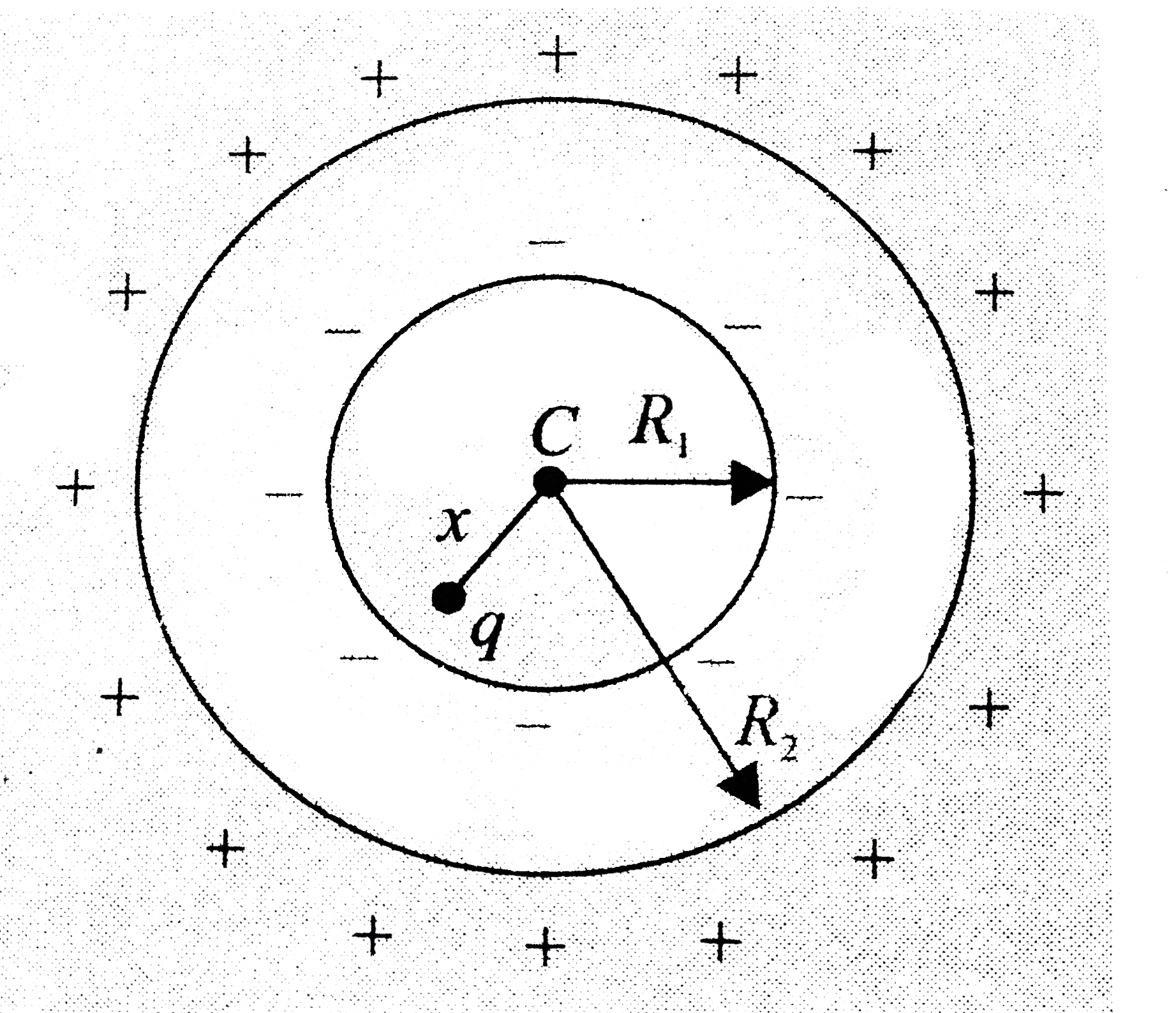 .
.
(i) electric potential at C
(ii) electric field and potential at a distance r from the center outside the shell.View SolutionA metallic spherical shell has an inner radius R1 and outer radius R2. A charge is placed at the centre of the spherical cavity. The surface charge density on the inner surface is
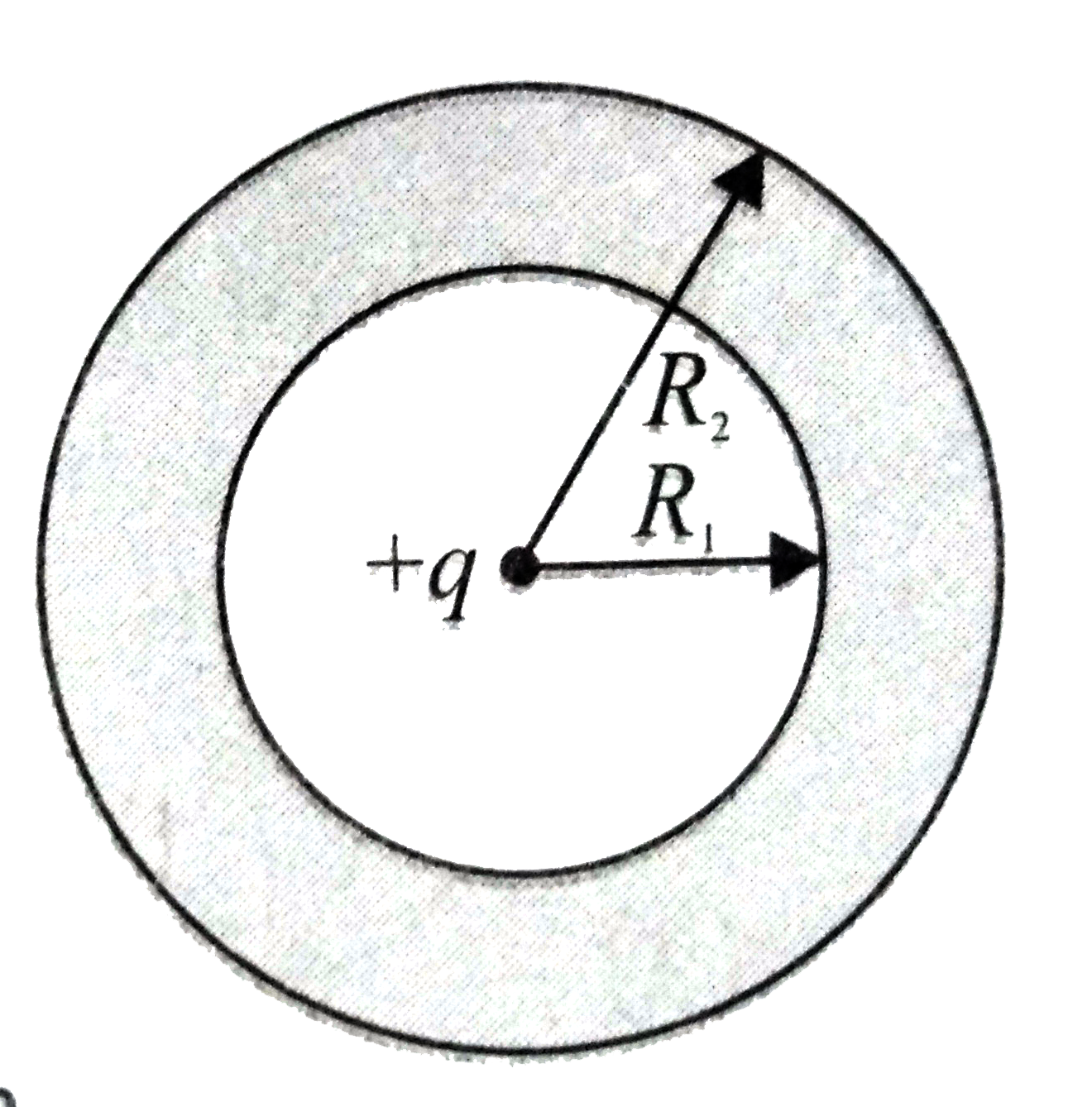 View Solution
View Solution
Knowledge Check
- Question 1 - Select One or More
A hollow conducting sphere of inner radius r and outer radius 2R is given charge Q as shown in figure, then the
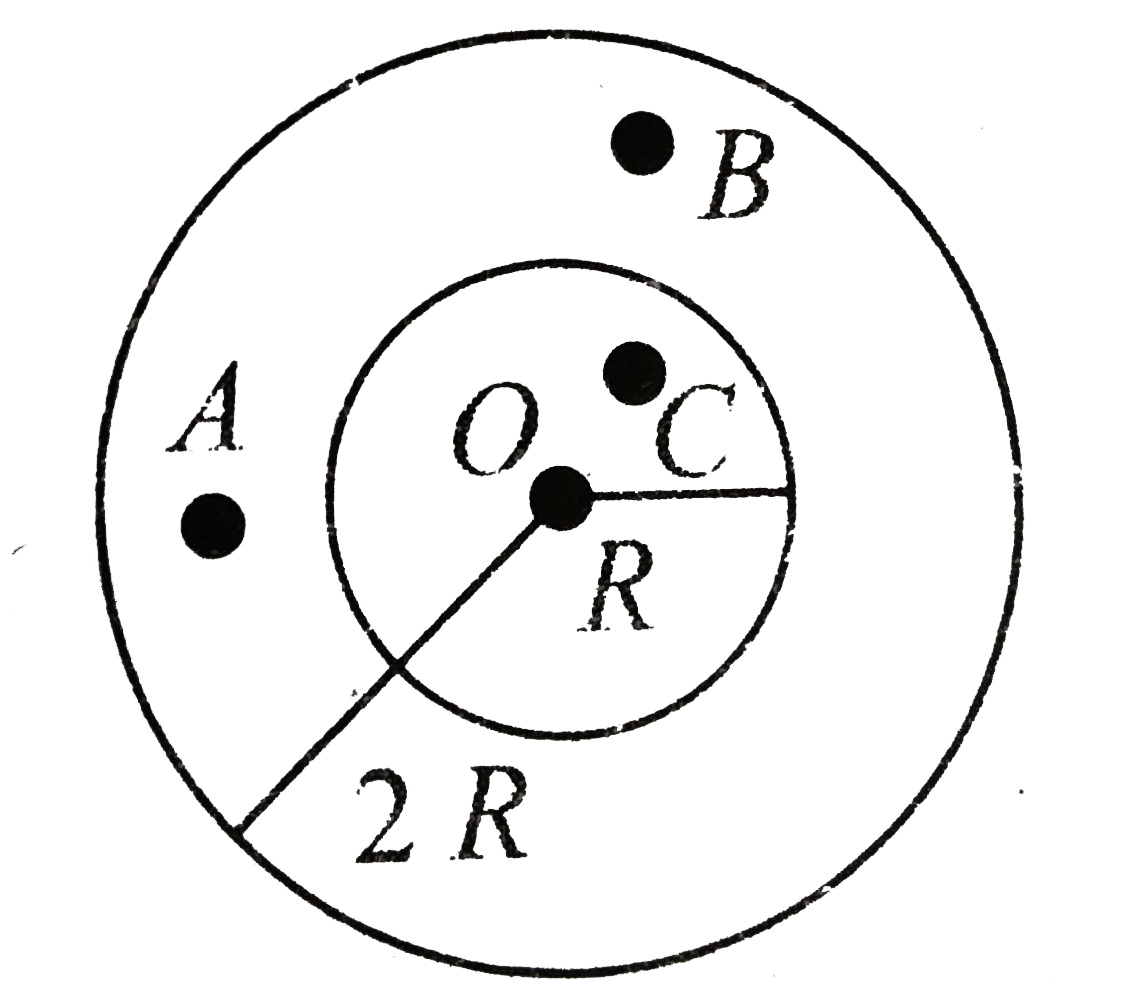 Apotential at A and B is same.Bpotential at O and B is same.Cpotential at O and C is same.Dpotential at A,B,C and O is same.
Apotential at A and B is same.Bpotential at O and B is same.Cpotential at O and C is same.Dpotential at A,B,C and O is same. - Question 2 - Select One
A point charge q is placed inside a conducting spherical shell of inner radius 2R and outer radius 3R at a distance of R from the center of the shell. Find the electric potential at the center of the shell.
A14πε0q2RB14πε04q3RC14πε05q6RD14πε02q3R
A metal spherical shell has an inner radius R1 and outer radius R2. A charge Q is placed at the center of the spherical cavity. What will be surface charge density on (i) the inner surface, and (ii) the outer surface ?
View SolutionA spherical conducting shell of inner radius r1 and outer radius r2 has a charges 'Q' A charges 'q' is placed at the centre of the shell.
What is the surface charges density on the (i) inner surface (ii) outer surface of the shell?
(b) A spherical conducting shell of inner radius r1 and outer radius r2 has a charges 'Q' A charges 'q' is placed at the centre of the shell.
Write the expression for the electric field at a point x>r2 from the centre of the shell.View SolutionA point charge +q is placed at the centre of a conducting spherical shell of inner radius a and outer radius b. Find the charge appearing on the inner and outer surface of the shell.
View SolutionA spherical conducting shell of inner radius r1 and outer radius r2 has a charge Q.
(a) A charge q is placed at the centre of the shell. What is the surface charge density on the inner and outer surfaces of the shell ?View SolutionConsider a thick walled metallic spherical shell with inner radius a and outer radius b. No charge is given to the spherical shell. A point charge +Q is kept at the centre. Find the electric potential at a point distance x from the centre where 0<x<∞.
View SolutionA point charge +Q is placed at the centre 0 of an uncharged hollow spherical conductor of inner radius 'a' and outer radius 'b'.Find the following.
The magnitude and sign of the charge induced on the inner and outer surface of the conducting shell.View Solution

